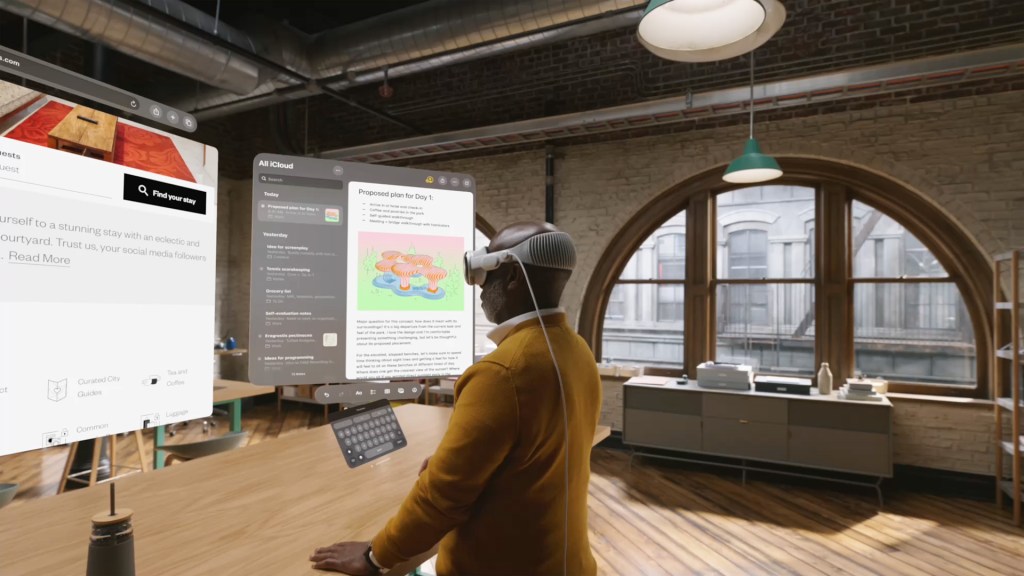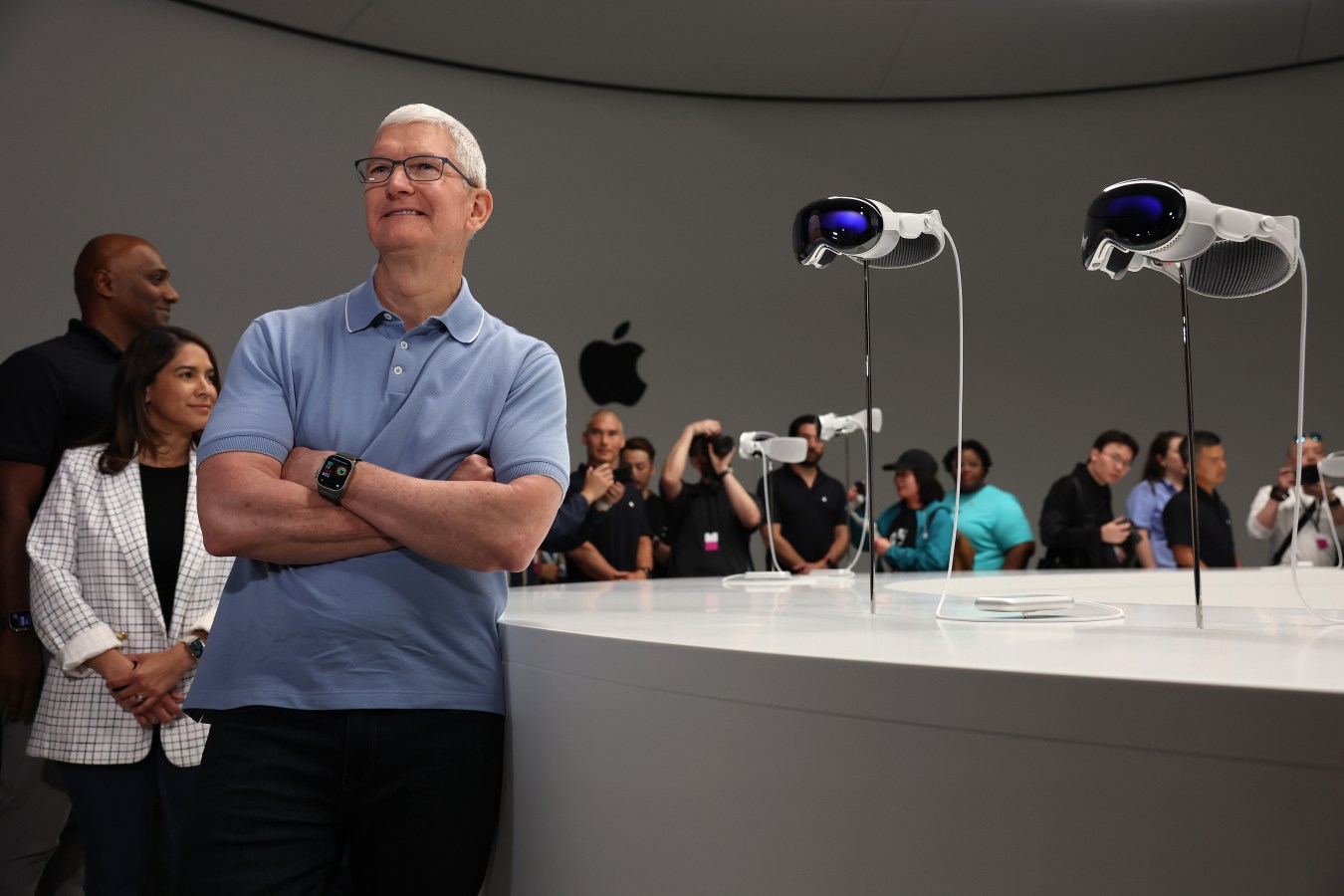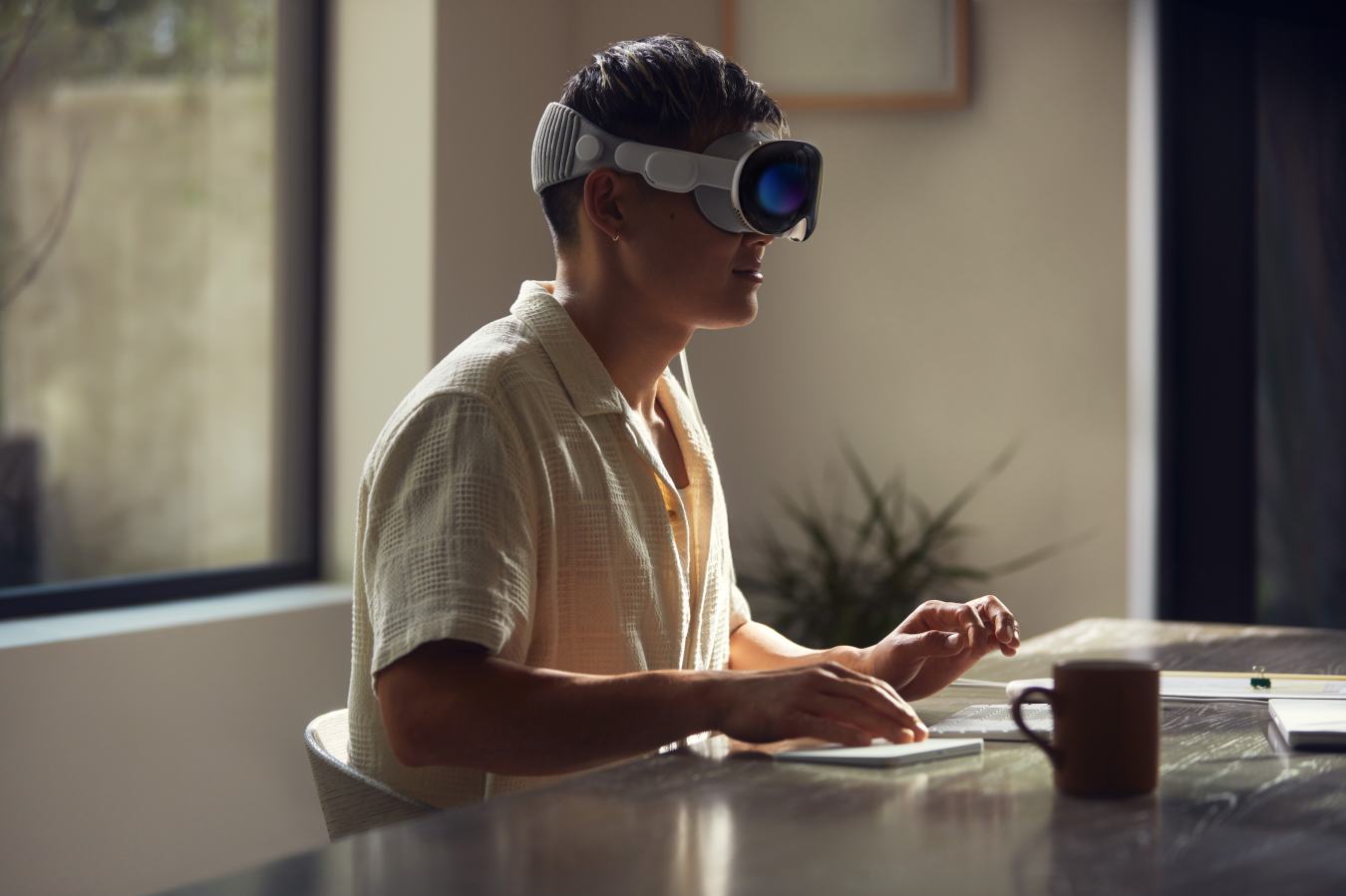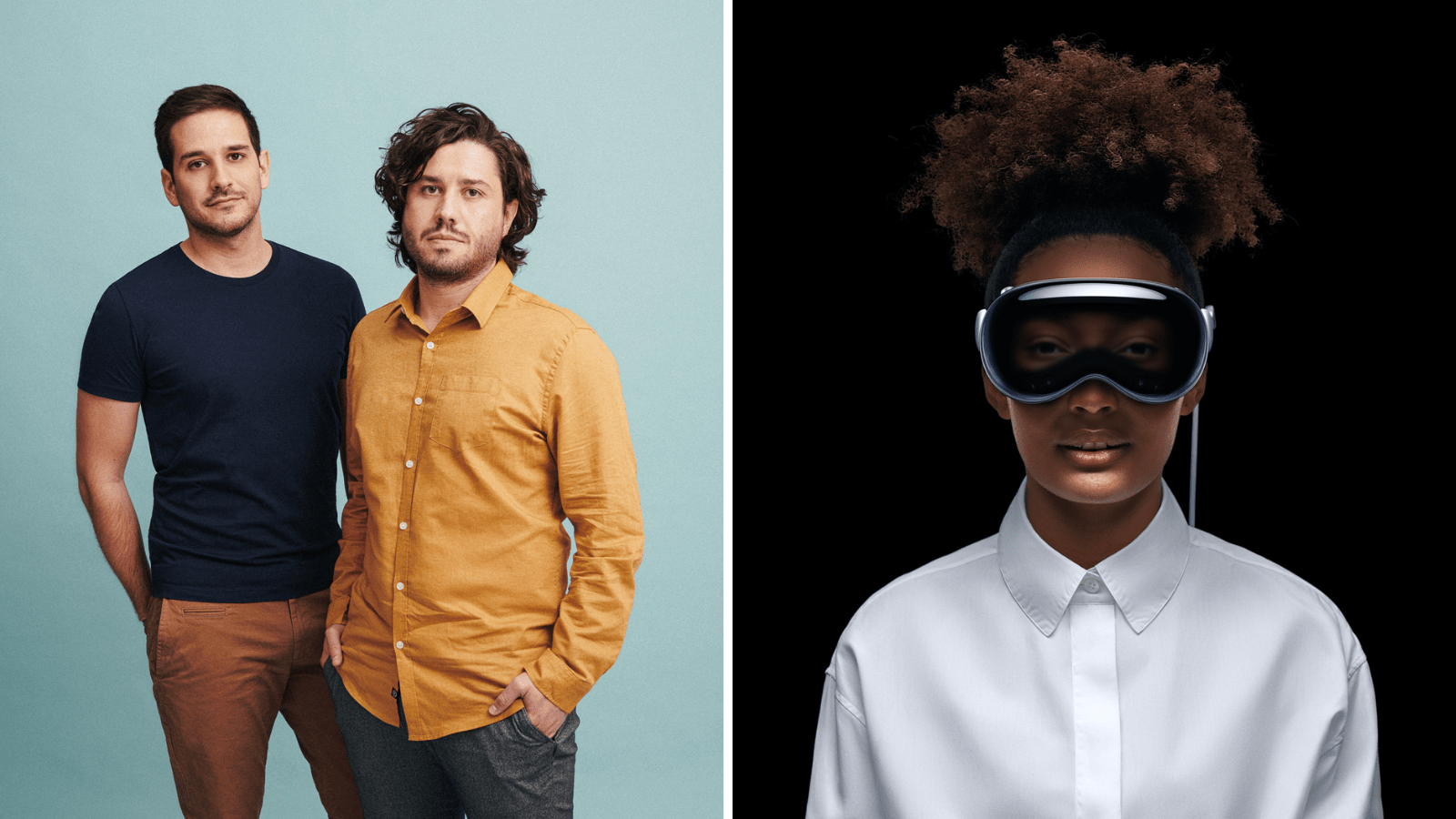Apple’s newest headset is a technological leap far beyond its competitors—but it’s still not clear what it’s for.

Apple definitely has something with its new Vision Pro mixed reality headset. I’m just not quite sure what it is — and I’m not certain Apple is either.
That was my big takeaway from Monday’s Apple event and a hands-on demo with the company’s first major new product in nearly a decade, and a pioneering foray into the new world of spatial computing that CEO Tim Cook is staking his legacy on.
After about 30 minutes with the device, I can say that this is the most surprise and delight I’ve felt in playing with a new Apple product since AirPods. The Vision Pro is hands down the best XR/VR/AR experience I’ve ever had. Nothing comes close; everything that came before feels like a parade of developer betas. Yes, it is far more expensive than the Meta Quest and other hardware like it, but the experience Vision Pro provides obliterates the ones they offer. The Meta Quest might as well be a Happy Meal toy now.
But even though I was wildly impressed by my experience using the Vision Pro, it’s not clear where this latest Apple innovation and the “spatial computing” that it pioneers is taking us.
Related
I have covered Apple for many years and attended most of the big launch events beginning with the iPod; “one more thing” means something to me. In other words, I appreciate Apple — as a journalist and a human. I have also seen it stumble, sometimes embarrassingly — Maps debacle? Yep. Antenna gate? Yep. So I should feel qualified to evaluate the Vision Pro. But walking out of the demo Monday, I didn’t feel that way. I was absolutely surprised and delighted. But I didn’t fully get it. Awed, but flummoxed is a good description of where I was at leaving the monolithic temporary white hall Apple had built just to showcase the device in private.
Here’s the thing: all of the advantages of Apple’s previous innovations were obvious. Before Apple put 1000 songs in my pocket, it was a pain to manage my gigantic CD collection. I loved every step of the path that saw my work-issued cinderblock of a laptop become a slim piece of hardware you could slip into a Manila envelope. All those things made my life and the lives of many transformatively better. They made my kid’s lives better, though they will never truly understand this because they were born into a world where many things truly “just work.” And to be clear, things absolutely did not just work for a long time. With this device, Apple has gotten the closest yet to making mixed reality work. The difference between its past breakthroughs is this, though: I don’t know why I need it to.

The hardware is … sick. I can’t imagine that there is more than a transistor or two in this thing that isn’t totally custom. Set-up was surprisingly easy. My demo (which was tightly orchestrated and accompanied by a human guide) was scheduled for an hour and 15 minutes, far longer than any Apple demo I’ve ever attended. I was certain that was because setup would take at least 30 minutes. It took under five, total. Two Face ID-esque scans, and something akin to a peripheral vision tracking exercise to essentially tether the interface to my eyes, and I was good to go. (I wear contacts and did not require additional calibration for glasses.)
The user interface — particularly the eye tracking — was, quite frankly, stunning. You can easily, intuitively look at an app icon with your eyes, pinch your fingers together with a hand resting on your thigh and launch an app. You can drag an app across your field of vision in much the same way Tom Cruise did in Minority Report. Yes, there is a learning curve, but not much of one. It is easy to be accurate; I was prepared for a bit of struggle and frustration; I had none. But I was also left wondering why I would want to do any of it with goggles strapped to my face when I can already accomplish all these things on my iPhone and Macbook.
The visuals and the displays that render them are stunning. Apple’s monomaniacal attention to detail has made everything (at least the stuff in the demo) beautiful and, crucially, legible. Text is easy to read. Images are beautiful and beautifully detailed. The visuals and the displays that render them are stunning. Window transparencies are elegant. There is an otherworldly feeling to the whole thing that is simultaneously very real.
There was a moment in an immersive video sizzle reel where I suddenly found myself suspended over a crevasse with a woman walking towards me across a tightrope and looking at me with stare into your soul intensity. It was physically jarring and elicited a totally involuntary expletive. Total surprise and delight moment. Another was an encounter with a dinosaur that stepped out of the screen it first appeared on and into the demo room. I was told to approach it, which I did. The dinosaur looked me in the eye and, when I tried to pet it, snapped at my fingers. It did not look like a video game creature. It did not look like an image of a dinosaur. Staring it in the face, inches away, it looked like a real animal.

The Apple Vision Pro home screen
Apple
Apple was right. You cannot appreciate the 3D photo/video capabilities of this thing without wearing it. I’m not even going to bother to try to describe it beyond saying that my immediate thought after experiencing it was wishing I had 3D movies like this of my kids growing up.
The ease with which you can blend physical and virtual worlds and the way that the device makes you feel connected to the real world even when you’re fully immersed in VR is elegant, well-considered and ingenious, I think. I am pretty sure it’s the reason I did not experience that low-grade general discomfort I typically feel in VR. I don’t think my pre-hominid lizard brain likes being in confined, unpredictable VR spaces with its eyes covered by a blacked-out diving mask. I think it gets a little anxious. After 30 minutes of using the device, it seemed like Apple may have solved this problem, at least for me.
The Vision Pro did not make me feel even vaguely car sick, something I have felt with pretty much every other VR headset I’ve tried. My face did not sweat, or develop that clammy post-VR … sheen while wearing the Vision Pro. The demo was only about 30 minutes, but the device wasn’t even noticeably warm when I put it down.
But while the technology here is undeniably impressive, Apple is facing some real challenges. First off, it’s expensive. That is a natural hurdle to adoption. But if you’re snickering about price, you’re not the target market right now. When it launched in 1984, the first Mac arrived at the market with an entirely new way of computing and a $2495 price tag. Adjusted for inflation, that’s well over $7000. With the Vision Pro, $3500 is the price of early adoption, which early adopters and Apple well know. (I don’t get the name either.)
Yes, it does look like an expensive pair of ski goggles. There are only so many form factors you can use when cramming enough camera, display and onboard processing power to put a realistic dinosaur in your living room. And there’s a good reason why Tim Cook did not wear it on stage! Did you really think Apple comms was going to risk Cook creating a new tech CEO dystopia meme? I am sure they were quite happy to leave that to Facebook CEO Mark Zuckerberg.

LOL.
But most of all, it’s unclear what people will regularly use it for. I see how this could be a workplace collaboration tool — it’s intuitive, easy and generally slick, but I’m not sure why I would. There’s a hurdle here and it’s not technological, it’s social. Are we really going to wear this at work? Would we wear it while working from home? Do I really want to be the first guy on the plane to put this thing on my face?
Honestly, I have absolutely no idea.
There are many questions like these to be answered and a 30-minute demo hardly provides enough experience to begin considering them. I think the BIG question here, and the one I’m most interested in hearing answered, is: what problems does the Vision Pro solve? What needs does it fill?
It’s a platform, Apple insists. I agree. But a platform for what? Games seem to be the obvious application, but my demo noticeably didn’t feature one (perhaps it wasn’t ready to). Work applications? I’m not sure why I need goggles when I have my MacBook. Movies? I could turn a room in my house into a private theatre for the same amount of money.
The first Mac brought computing into our homes and made it human. The first iPod put our CD collections in our pockets. The iPhone put our home computers in our pockets and introduced touch interfaces that are now quotidian. The Vision Pro arrives with what seems to be a similar world-denting paradigm, but it’s also accompanied by a major social stigma — GIANT THING ON FACE. Will the need or needs it fulfills be enough to overcome that? What will my kids, who grew up on relentlessly refined computer desktops and truly wireless music and watching 4k movies on their phone, make of all this? I have no idea.
And so the big question remains: How are we really going to use this thing? And more importantly, how are they?
This article was first published on forbes.com and all figures are in USD.


